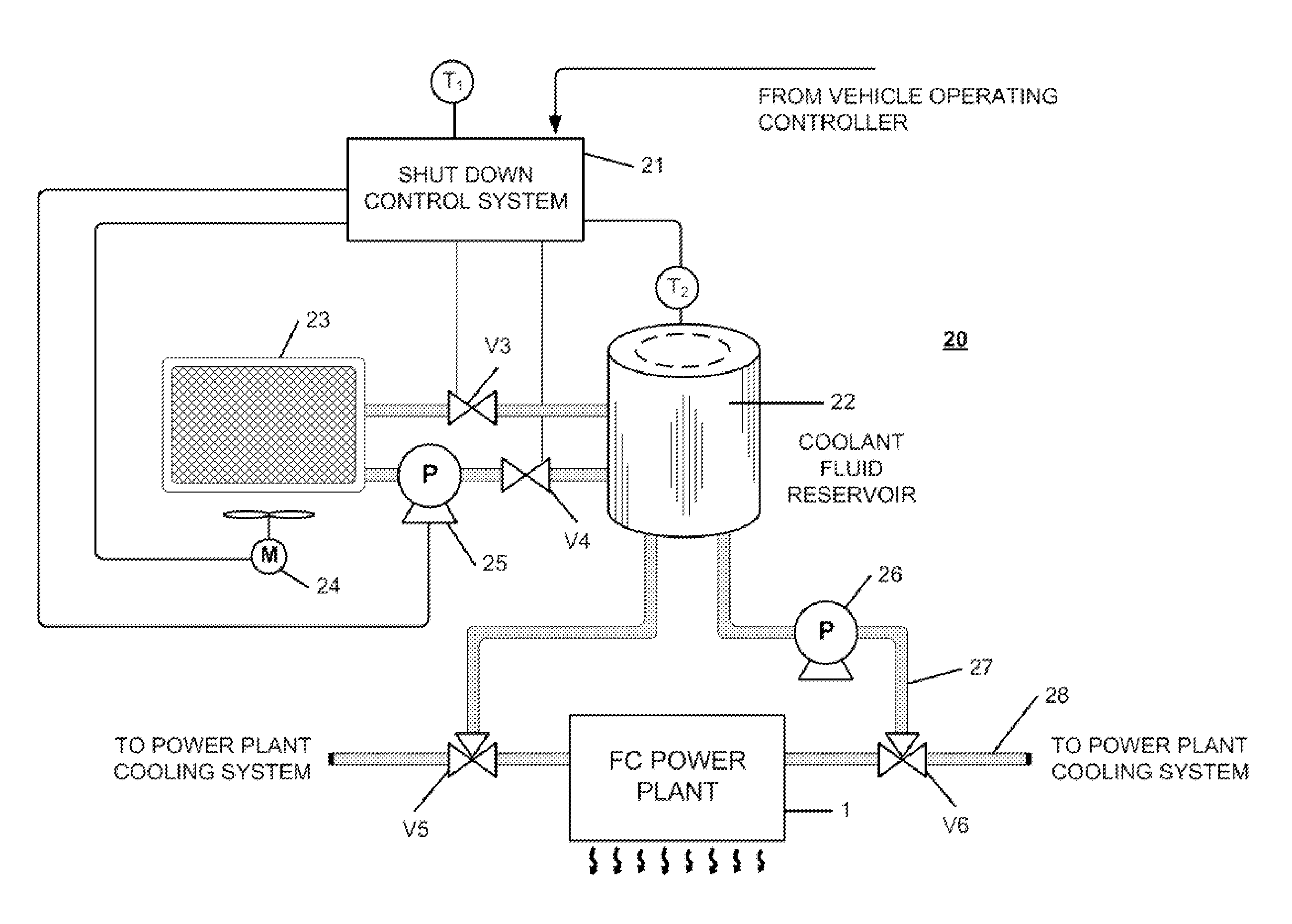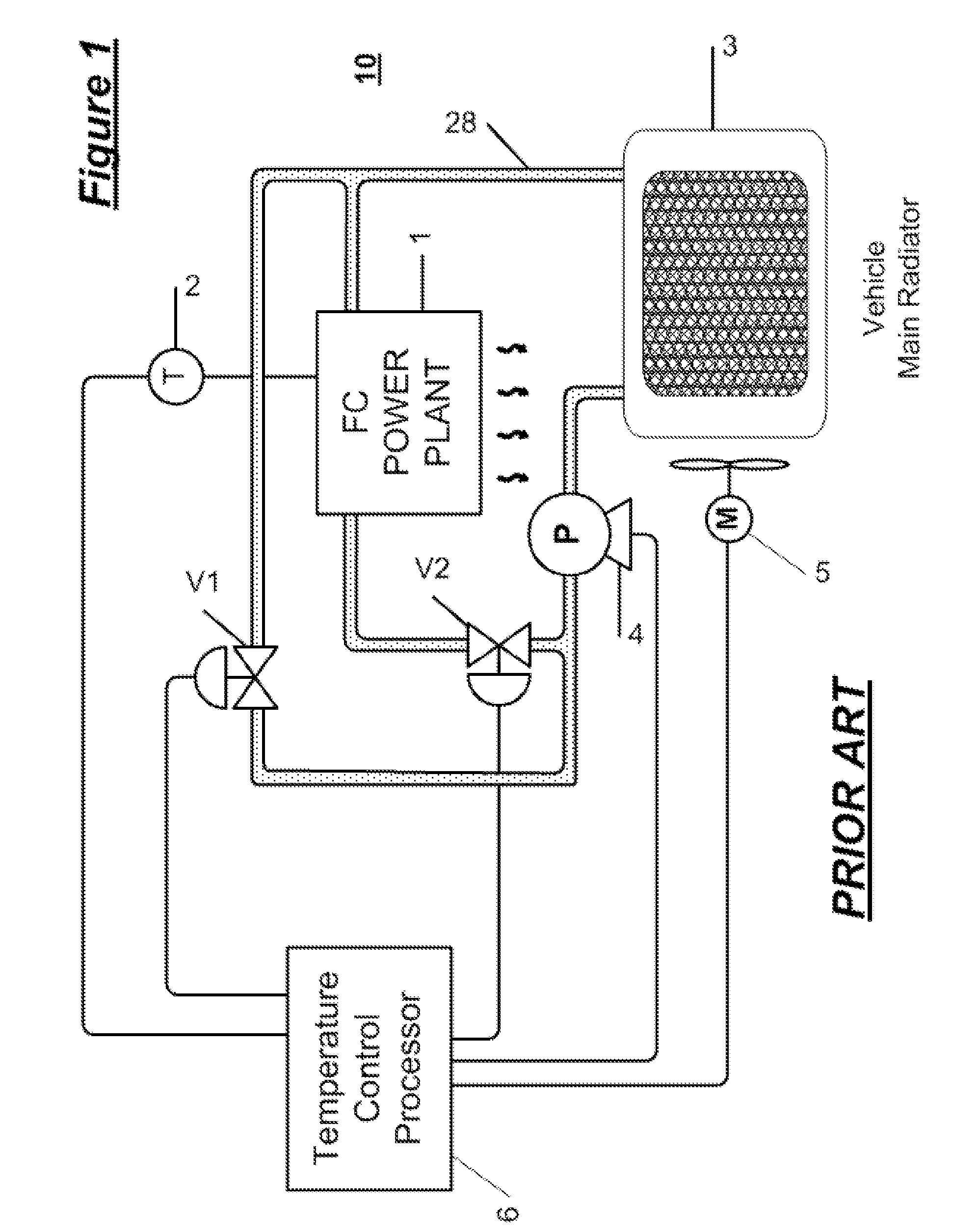Cooling system for fuel cell stack shutdown
a fuel cell and cooling system technology, applied in the direction of transportation fuel cell technology, hydrogen technology, electric generators, etc., can solve the problems of inability to meet the requirements of fuel cell operation, and corrosion of catalysts and catalyst assemblies, so as to reduce the effective cell life, eliminate voltage persistence, and minimize the effect of voltage persisten
- Summary
- Abstract
- Description
- Claims
- Application Information
AI Technical Summary
Benefits of technology
Problems solved by technology
Method used
Image
Examples
Embodiment Construction
[0013]The invention provides a cooling system for vehicle fuel cell stacks that eliminates the hot condition in the fuel cell just after shut down and mitigates the catalyst active effect that causes degradation of the fuel cell assembly components. In the invention, the fuel cell cooling system is provided with a secondary cooling circuit with a reservoir which has a high heat dissipation wall. When the fuel cell powered vehicle is running and consuming fuel cell power, the coolant in the second reservoir is cooled to ambient temperature. After shut down of the generation of electricity by the fuel cell stack, a water pump moves the coolant from the supplemental reservoir into the fuel cell stack to replace the typically hot, conventional, fuel cell coolant quickly. Thus, the temperature of the fuel cell catalyst component is decreased to ambient temperature immediately; there is no heat or temperature difference between the stack and ambient temperature and residual voltage produc...
PUM
| Property | Measurement | Unit |
|---|---|---|
| open circuit voltage | aaaaa | aaaaa |
| temperature | aaaaa | aaaaa |
| corrosion | aaaaa | aaaaa |
Abstract
Description
Claims
Application Information
 Login to View More
Login to View More - R&D
- Intellectual Property
- Life Sciences
- Materials
- Tech Scout
- Unparalleled Data Quality
- Higher Quality Content
- 60% Fewer Hallucinations
Browse by: Latest US Patents, China's latest patents, Technical Efficacy Thesaurus, Application Domain, Technology Topic, Popular Technical Reports.
© 2025 PatSnap. All rights reserved.Legal|Privacy policy|Modern Slavery Act Transparency Statement|Sitemap|About US| Contact US: help@patsnap.com



